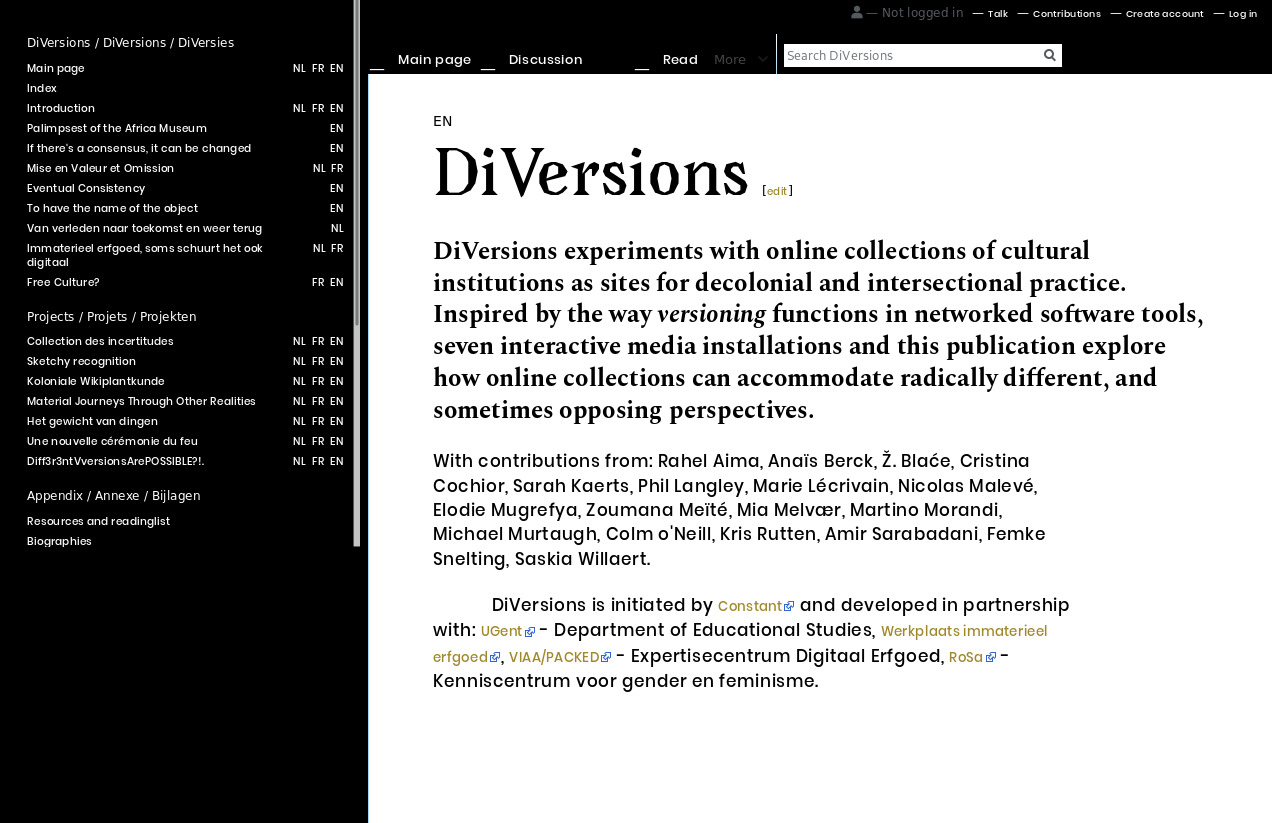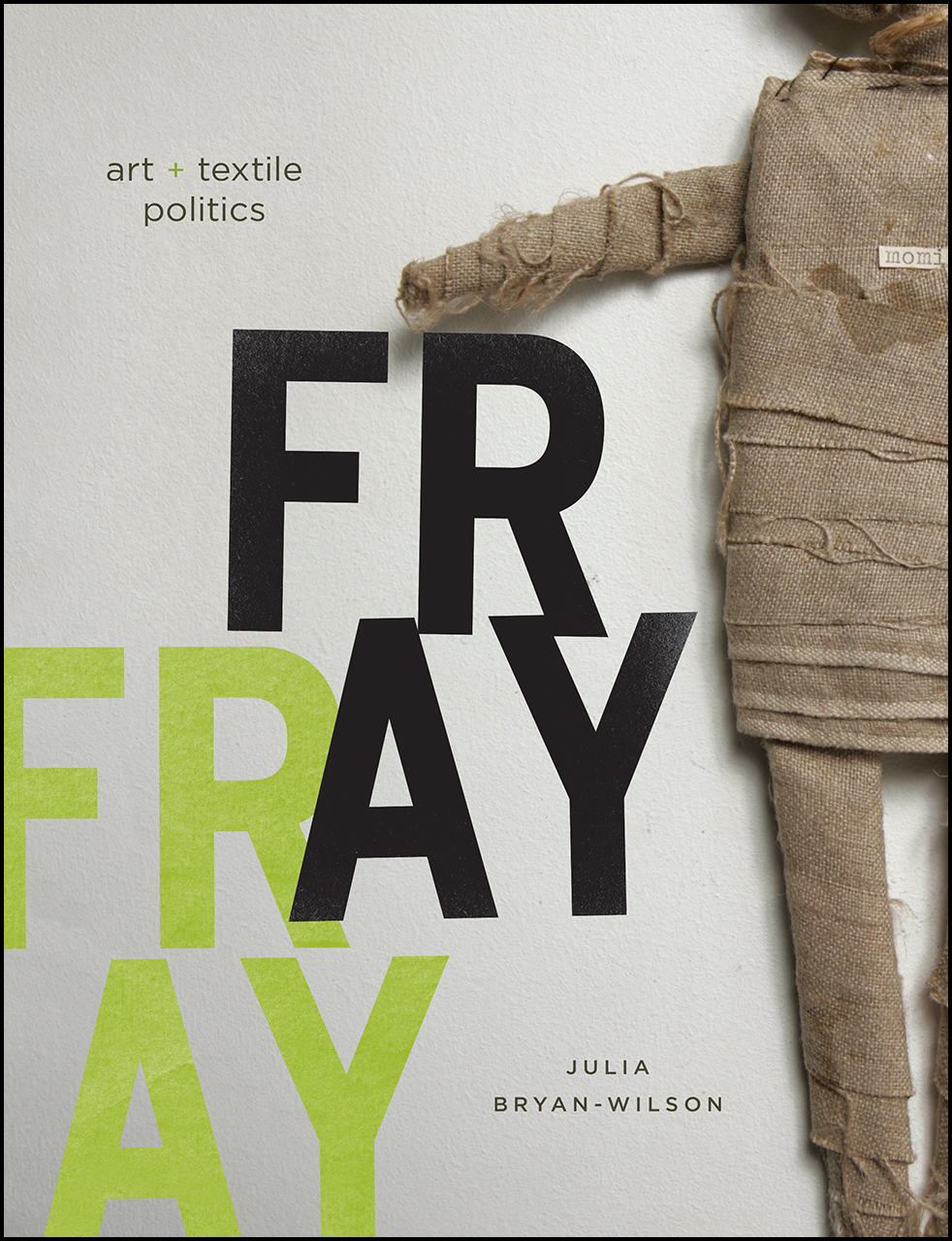DiVersions (2019) [NL, FR, EN]
Filed under wiki book | Tags: · archive, augmented reality, classification, collecting, cultural heritage, data, database, decolonization, interface, intersectionality, queer, software

“DiVersions experiments with online collections of cultural institutions as sites for decolonial and intersectional practice. Inspired by the way versioning functions in networked software tools, seven interactive media installations and this publication explore how online collections can accommodate radically different, and sometimes opposing perspectives.”
With contributions from: Rahel Aima, Anaïs Berck, Ž. Blaće, Cristina Cochior, Sarah Kaerts, Phil Langley, Marie Lécrivain, Nicolas Malevé, Elodie Mugrefya, Zoumana Meïté, Mia Melvær, Martino Morandi, Michael Murtaugh, Colm o’Neill, Kris Rutten, Amir Sarabadani, Femke Snelting, Saskia Willaert.
Edited by Constant (Elodie Mugrefya, Femke Snelting)
Publisher Constant, Brussels, October 2019
Free Art License 1.3
Julia Bryan-Wilson: Fray: Art and Textile Politics (2017)
Filed under book | Tags: · activism, aids, art, art criticism, art history, craft, feminism, fiberwork, folk art, gender, handmaking, labour, politics, queer, quilting, race, textile, textile design, weaving

“In 1974, women in a feminist consciousness-raising group in Eugene, Oregon, formed a mock organization called the Ladies Sewing Circle and Terrorist Society. Emblazoning its logo onto t-shirts, the group wryly envisioned female collective textile making as a practice that could upend conventions, threaten state structures, and wreak political havoc. Elaborating on this example as a prehistory to the more recent phenomenon of “craftivism”—the politics and social practices associated with handmaking—Fray explores textiles and their role at the forefront of debates about process, materiality, gender, and race in times of economic upheaval.
Closely examining how amateurs and fine artists in the United States and Chile turned to sewing, braiding, knotting, and quilting amid the rise of global manufacturing, Julia Bryan-Wilson argues that textiles unravel the high/low divide and urges us to think flexibly about what the politics of textiles might be. Her case studies from the 1970s through the 1990s—including the improvised costumes of the theater troupe the Cockettes, the braided rag rugs of US artist Harmony Hammond, the thread-based sculptures of Chilean artist Cecilia Vicuña, the small hand-sewn tapestries depicting Pinochet’s torture, and the NAMES Project AIDS Memorial Quilt—are often taken as evidence of the inherently progressive nature of handcrafted textiles. Fray, however, shows that such methods are recruited to often ambivalent ends, leaving textiles very much “in the fray” of debates about feminized labor, protest cultures, and queer identities; the malleability of cloth and fiber means that textiles can be activated, or stretched, in many ideological directions.
The first contemporary art history book to discuss both fine art and amateur registers of handmaking at such an expansive scale, Fray unveils crucial insights into how textiles inhabit the broad space between artistic and political poles—high and low, untrained and highly skilled, conformist and disobedient, craft and art.”
Publisher University of Chicago Press, 2017
ISBN 9780226077819, 0226077810
326 pages
via slowrotation
Reviews: Holland Cotter (New York Times, 2017), Barbara Wisnoski (J Canadian Art History, 2018), Alexa Griffith Winton (J Design History, 2019), Janis Jefferies (Art Bulletin, 2019), Elizabeth S. Hawley (Winterthur Portfolio, 2019), Jayme Collins (InVisible Culture, 2019), Jason Edwards (Sculpture J, 2019), Katarzyna Falęcka (J Visual Culture, 2021).
Video interview with author (with Lynne Cooke, NGA, 60 min, 2017)
PDF (18 MB)
Comment (0)Rhizomes, 30: Quantum Possibilities: The Work of Karen Barad (2016)
Filed under journal | Tags: · epistemology, feminism, knowledge production, materialism, ontology, philosophy, physics, quantum physics, queer, science
“In the past decade, Karen Barad’s oeuvre, especially the voluminous Meeting the Universe Halfway (2007), has attracted increasingly great attention in feminist philosophy, cultural studies and feminist science studies. Alongside scholars like Elizabeth Wilson and Vicki Kirby, she has spearheaded the recent feminist exploration of complex scientific issues, and presented new less categorical ways of thinking ontology and epistemology (or indeed onto-epistemology as she refers to it) as a result. Many of the terms introduced and developed by Barad, such as ‘intra-action’, ‘diffraction’ and ‘agential realism’ have shifted the standard metrics of knowledge production and her theories have inspired animated discussion in emerging critical strands as varied as the new materialism in feminism, object oriented ontology, post- and transhumanism, speculative realism, environmental and digital humanities, among others. In a critical climate that is becoming increasingly ‘Baradian’, this special issue on the ‘Quantum Possibilities’ of Barad’s work does not merely aim to reflect the engagements currently being made within these fields, but extends Barad’s ethos of continually rethinking our critical concepts and methodologies ‘without taking these distinctions to be foundational or holding them in place’. Creating ‘diffractive’, or new ‘quantum level’ means of reflecting on, and engaging with Barad’s work, the essays collected here stake out a new set of directions for their wide array of disciplinary identities.”
With essays by Joseph Rouse, Evelien Geerts and Iris van der Tuin, Rebekah Sheldon, Kathrin Thiele, Hanna Meißner, Andie Elizabeth Shabbar, Ulf Mellström, Martin Savransky, Dorothea Olkowski, Graham Harman, Levi R. Bryant, Rick Dolphijn, Katie King, Ino Mamic, and Myra J. Hird.
Edited by Karin Sellberg & Peta Hinton
Published 12 July 2016
Open access
ISSN 1555-9998

